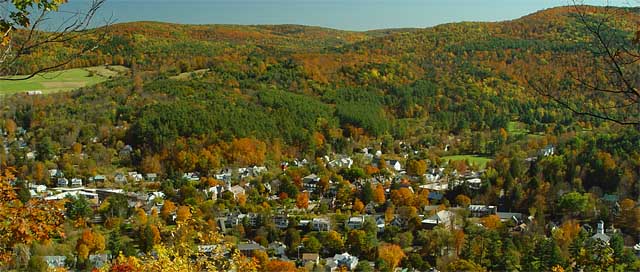Small Town Retreat
Assuming you’ve made reasonable preparations, the greatest single danger to your survival when ‘the’ crisis strikes will be your proximity to concentrated masses of systems-dependent people. Even living in a relatively out of the way place in a high population density area is extremely hazardous when it comes to ‘the’ crisis.
The major consideration for determining your retreat location is the population density. The location should ideally be a tank of gas away from any major metropolitan area while the local population should be low. Why? Because those who are not prepared, especially the bad element at first, will overrun and loot as desperation sets in.
Another consideration should be the location’s proximity to any nuclear power plant. Even if a nuke plant is say, 100 miles away, if you are downwind from the prevailing winds of the region, then you are in harms way. Nuke plants need electricity to remain safe. Without it, well, just look at what happened in Fukushima Japan.
Be cautious of choosing a retreat location that is embedded into a major forest, as a forest fire may not be contained during ‘the’ crisis as it would be otherwise. Isolationism is not the answer.
Consider the possibility of nuclear war and the potential target areas thereof. Although most people cannot fathom the possibility and brush it off as something that would never happen, the fact is the threat remains.
Other considerations include a reasonable climate, agriculture, hunting, fishing, and trapping.
During ‘the’ crisis, retreating to isolation or living in a remote isolated region, is probably not the best thing. Instinctively many would think it to be so, however when you consider that a large marauding group can easily overcome a small isolated group, and when you consider that long term survivability depends upon the working and complimentary skills of many people, you may conclude that an ideal retreat location may be in a small rural town of sufficient numbers of like minded folks.
The ideal rural small town of preference will have a population of 5,000 or less. Most of these small towns have populations that look out for themselves and their neighbors, they mostly know each-other, will barter together, they recognize outsiders, and will probably band together during crisis with a greater sense of responsibility than perhaps the bigger town.
According to the 2000 census, more than 80 percent of the nation’s population resided in one of the 350 combined metropolitan statistical areas.
If you enjoyed this, or topics of current events risk awareness or survival preparedness,
click here to check out our current homepage articles…

